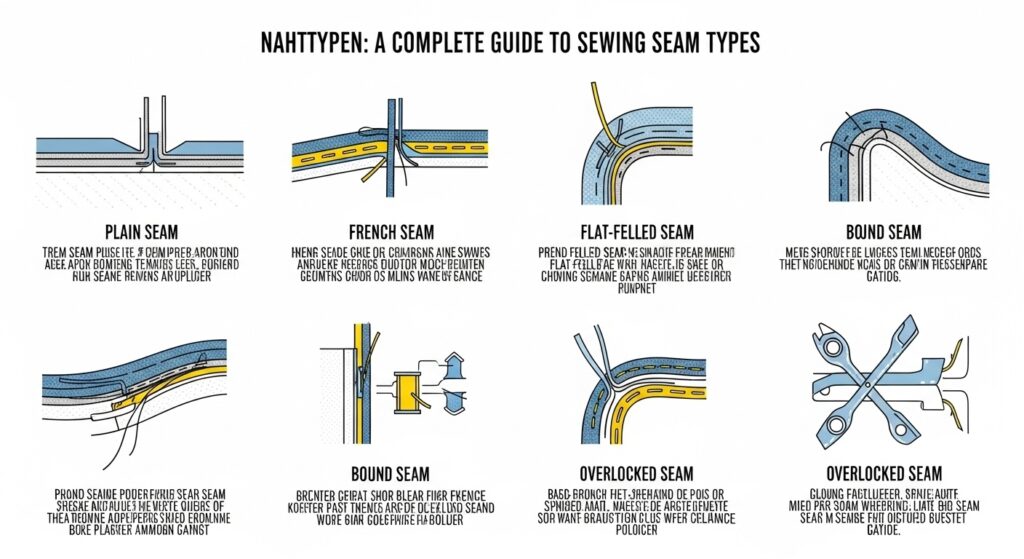Nahttypen refer to various methods of joining fabric edges through stitching. Each seam type has unique characteristics that affect strength, appearance, and suitability for different fabrics and projects.
Why Seam Types Matter
Choosing the correct seam influences garment fit, durability, and appearance. The right seam enhances longevity, while the wrong one may cause fraying or discomfort.
Common Seam Types Every Beginner Should Know
Plain Seam
The simplest seam, created by stitching two fabric pieces right sides together. Perfect for woven fabrics and basic garments.
French Seam
Encloses raw edges by stitching twice. Ideal for lightweight or sheer fabrics, offering a neat and durable finish.
Flat-Felled Seam
A strong seam where raw edges are folded and stitched flat. Common in jeans and shirts, both functional and decorative.
Overlocked Seam
Uses a serger to trim and finish edges at once. Perfect for knit fabrics and casual wear with stretch.
How to Choose the Right Seam
- Lightweight fabrics: French seam
- Heavy fabrics like denim: Flat-felled seam
- Stretchy knits: Overlocked seam
Tools and Materials Needed
Essential tools: sewing machine, fabric-appropriate needles, scissors, pins, seam ripper, measuring tape, and optionally an overlocker.
Common Mistakes Beginners Make
Errors include uneven seam allowances, improper edge finishing, and stitching too close or far from the edge.
Practice Projects
- Pillowcases or tote bags → Plain seams
- Lightweight blouses → French seams
- Denim accessories → Flat-felled seams
Troubleshooting Seam Issues
Puckering, skipped stitches, or thread breaks often result from incorrect tension, needle type, or fabric handling. Test settings on scraps before sewing the final project.
Next Steps
Once comfortable, explore decorative seams like welt seams or princess seams. Online tutorials, sewing classes, and experimentation with patterns will help expand your skills.
Conclusion
Understanding and mastering Nahttypen empowers you to create garments that are beautiful and long-lasting. With practice and patience, seam mastery will become second nature.happy stitching!






